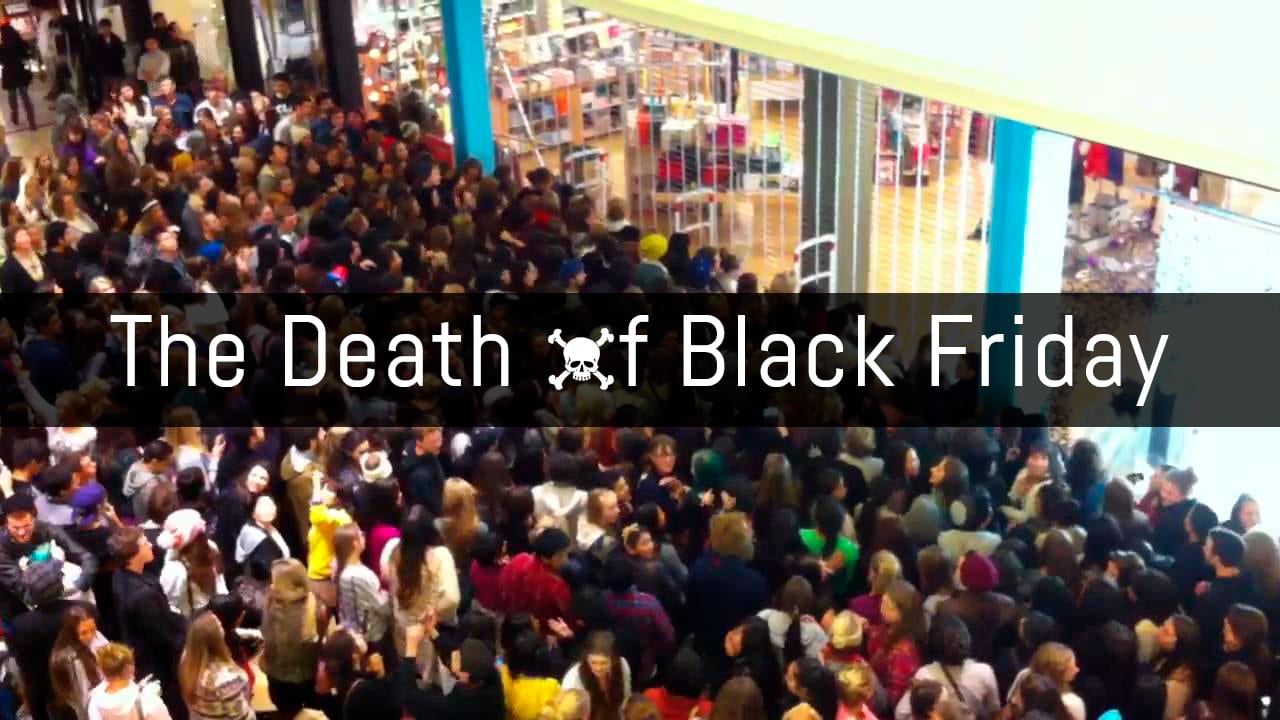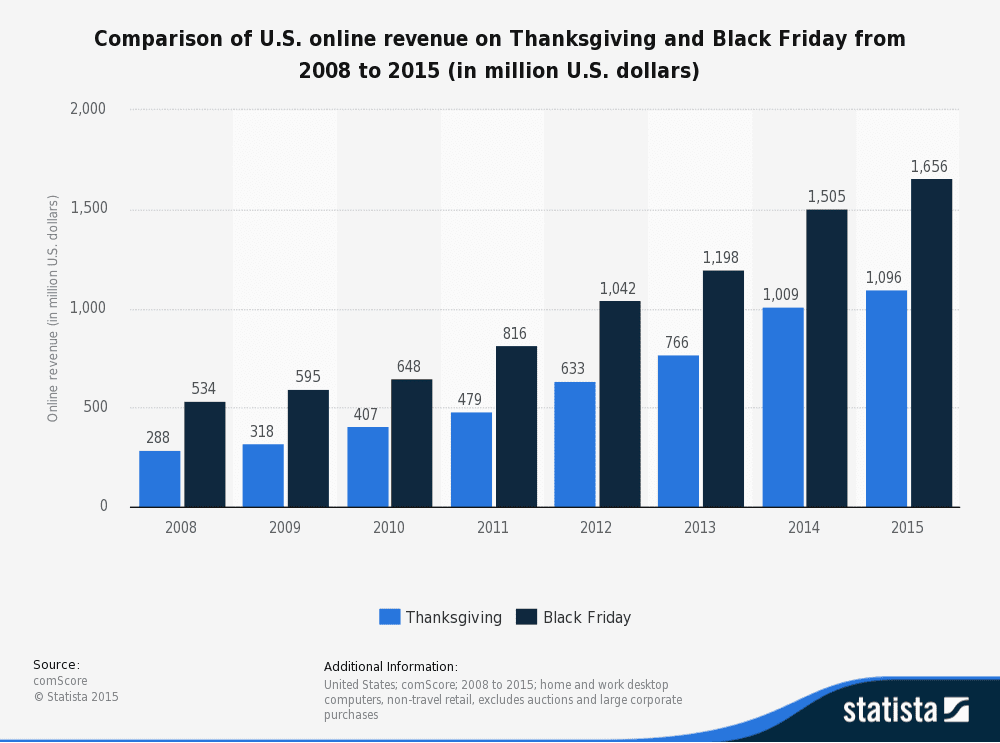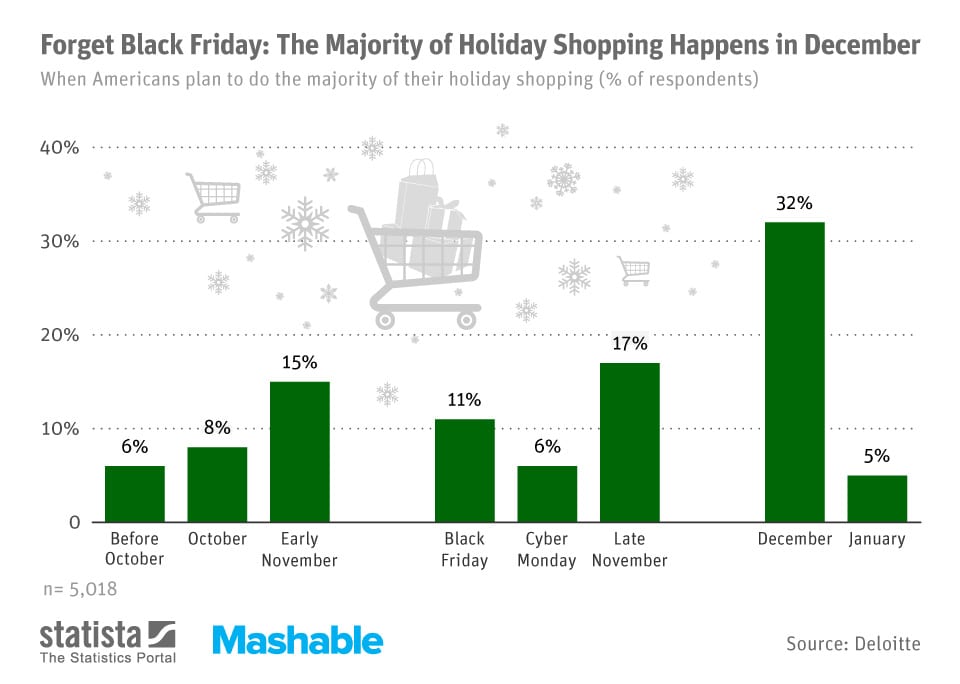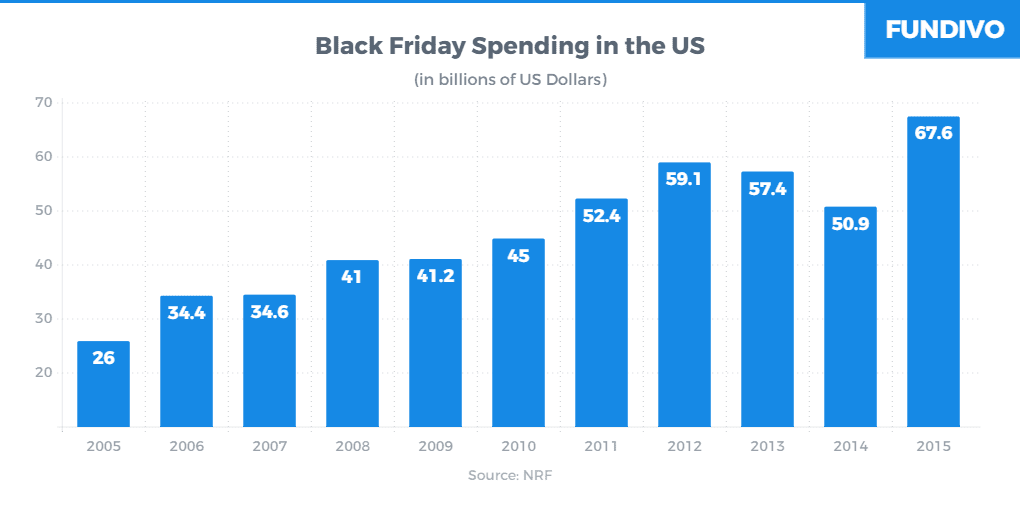The Unofficial Death of Black Friday

Up until just recently, Black Friday was one of the most momentous days in retailing.
The irony actually begins here… Are you ready for some Black Friday Trivia? Let’s start at the beginning then.
You see, History.com explains that Black Friday was actually a term that referred to a stock market crash that was instigated as part of a financial conspiracy between two financiers, Jay Gould and Jim Fisk, who attempted to accumulate most of the gold on the market and then drive up the price, earning billions for their efforts.
Of course, the conspiracy ultimately unraveled. The ending results were disastrous. The stock market inevitably crashed. It bankrupted many investors with it. Even more ironically, Black Friday occurred on Friday, September 24, 1869, a good month before the Black Friday we know now takes place.
But, the term is aptly applied and conventional in the modern day. Why? Because retailers would absorb losses all year long, up until this first Friday after Thanksgiving, when their sales would finally be in the black through Christmas. In essence, it earned its name because retailers knew that they would be able to earn enough profit in the black for the following month to offset any other annual losses they encumbered.
Retailers Turning Backs on Billions in Revenue
According to the Statista chart you see below, last year, Black Friday raked in $1.66 billion, a slight increase from the $1.5 billion it hauled in the year prior. This year, Black Friday sales statistics forecast that it may exceed $2 billion, but those numbers won’t be verifiable until after this shopping holiday takes place.

A quick look at the list of stores that will not be open on Black Friday, courtesy of Best Black Friday, is shocking. Over 50 National retailers will shutter doors from Thanksgiving through Black Friday this year.
The list includes large retailers like American Girl, Dillard’s, Costco, Crate and Barrel, Lowe’s, Neiman Marcus, Petco, Mall of America, Home Depot, Hobby Lobby, Nordstrom’s and many others. Combined, these comprise some of the largest and oldest retailers in the nation… you know, the ones most likely to benefit from hosting a Black Friday event, much less also from keeping their doors open late on Thanksgiving eve.
Fortunately, the most commonly stated reasons for closure is: “Allow employees time to spend with family.”
Why is Black Friday Dying?
The truth is that Black Friday was just a fancy name that was attached to what already marked the start of the short holiday shopping season. In essence, it was a creative marketing ploy that retailers used to drive more foot traffic into their stores. Knowing that people would come anyways, they added door busters and special pricing on limited selection items to get the numbers up. Naturally, more people equals more sales.
But both the weary shopper and wearier employee grew tired of the craziness. From the constant bickering and fighting to the two-hour waits in line, terrible traffic and parking garage robberies. By the end of 2015, it had taken its toll. US News reported that Black Friday shopping statistics showed a substantial decline from 2014, losing $10.4 billion to online shoppers who were sick of the mall havoc.
Notably, a few other reasons existed. “A big reason for the declines is increased online shopping, as Americans hunt down deals on their smartphones, tablets and computers. Another key factor: Many retailers are offering bargains long before Thanksgiving, limiting the impact of Black Friday specials,” US News wrote in their report.
All said and done, Black Friday only accounts for 11% of all holiday spending, according to Statista and Mashable (see chart below). December is really the hot month, where 32% of all holiday retail spending occurs.

Black Friday Statistics
Still, Black Friday shopping statistics yield the healthiest numbers for any brick and mortar holiday, even if 50 national retailers are closed and more shoppers are hopping online or are just waiting it out for Cyber Monday deals. Take a look at these numbers, courtesy of Adobe.
- In 2015, shoppers dropped $4.5 billion between Thanksgiving and Black Friday.
- Most popular tech items were Samsung 4K TVs, the Apple iPad Air 2, the Microsoft Xbox One, the Apple iPad Mini, and the Sony PS4.
- Most popular toys included: Lego Dimensions, Shopkin dolls, Lego Star Wars, Barbie Dream House, and Lego Friends.
- Online sales comprised 40% of all Black Friday numbers.
- Mobile shopping generated $538 million.
- Tablets generated 15% of all online sales.
- US retailers earmarked $67.6 billion in sales over the four-day span for 2015.
- An estimated 136 million Americans bought at least one item.
- The average amount spent by Americans was $405 for that weekend

Amazon “Prime Day” is the New Black Friday
While Black Friday may be unofficially dead and or dying, at least as far as brick and mortar retailers are concerned, it’s memory is revived in spirit online. Proof of this is found with Amazon. A CNET report from around this time last year spells it out in plain English: “Amazon’s Prime Day breaks single-day sales record.”
“On an otherwise typical Tuesday in July, Amazon pulled off the biggest single day of sales in its more than 20 years of doing business, outdoing all previous Black Friday and Cyber Monday sales.”
- Prime membership increased by 51% year over year.
- More than 90,000 TVs were sold.
- More than 200,000 headphones were sold.
- More than 23,000 Roomba vacuum cleaners were sold.
- More than 215,000 Instant Pot 7-in-1 Multi-Functional Pressure Cookers were sold.
The real kicker is that Prime Day occurs in July, long before Black Friday does in late November. Looks like Christmas in July is becoming the new Black Friday. For shoppers who start stocking up far in advance, it’s a comforting notion to know that you won’t be getting trampled in a stampede come the first Friday following Thanksgiving.
It’s also a telling sign of the times, one that demonstrates convenience, low prices and easy returns are the future of retailing. Click on the infographic below, courtesy of Internet Retailer, to find out why Amazon’s Prime Day is the new Black Friday. Want more info? Here’s a Complete Guide to Cyber Monday and Black Friday.

Share On:








